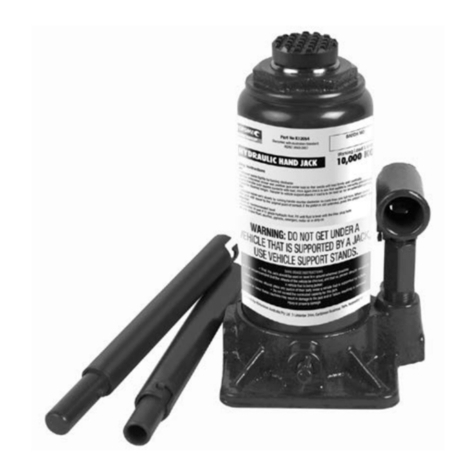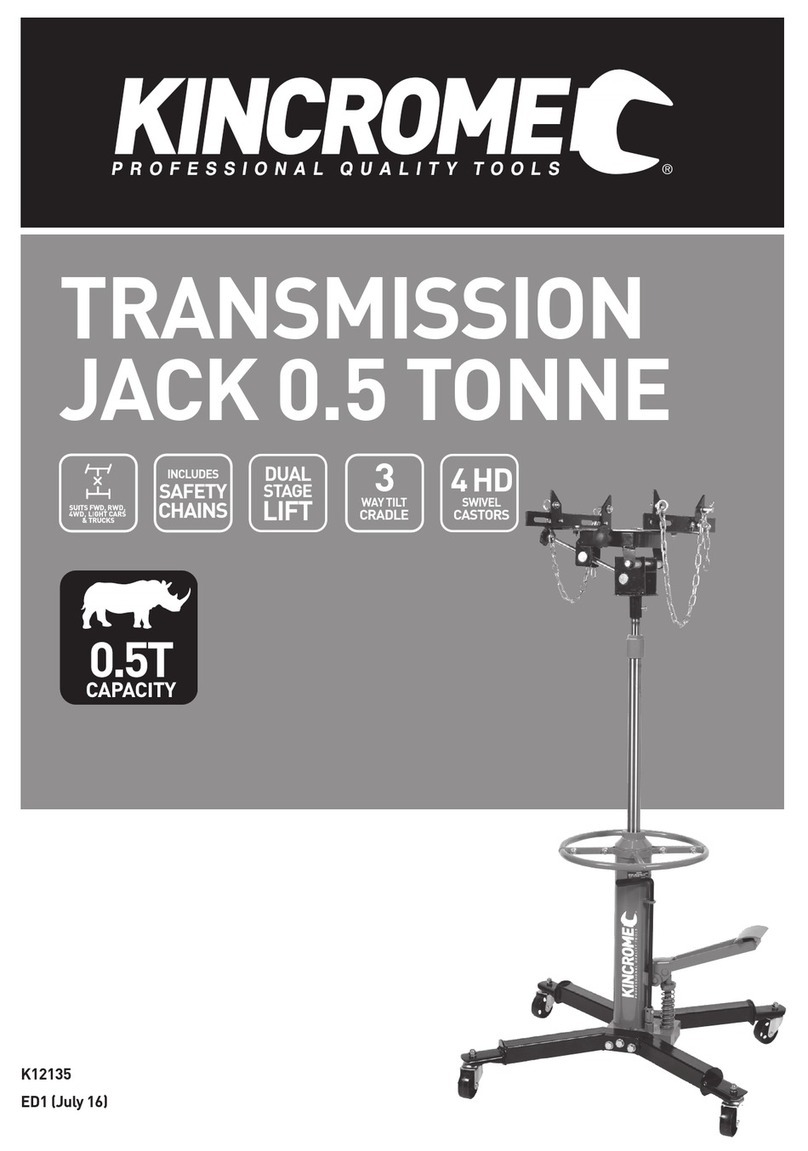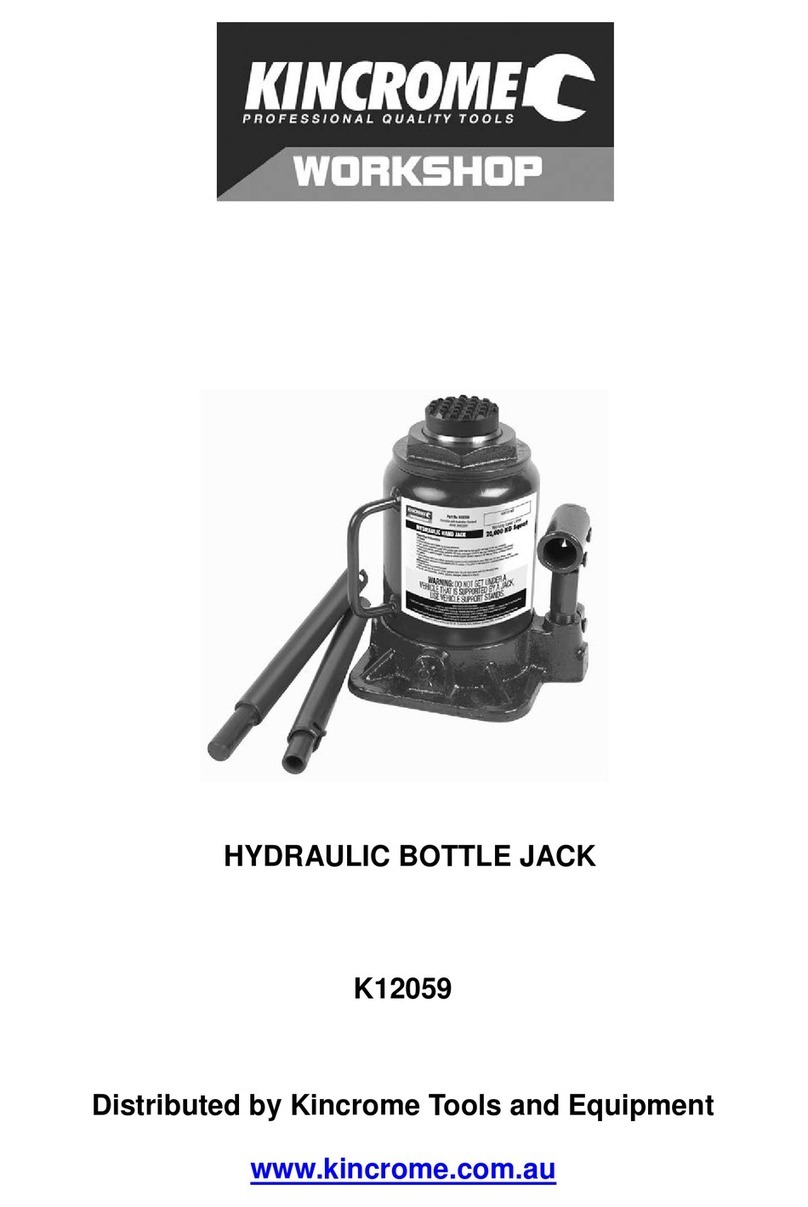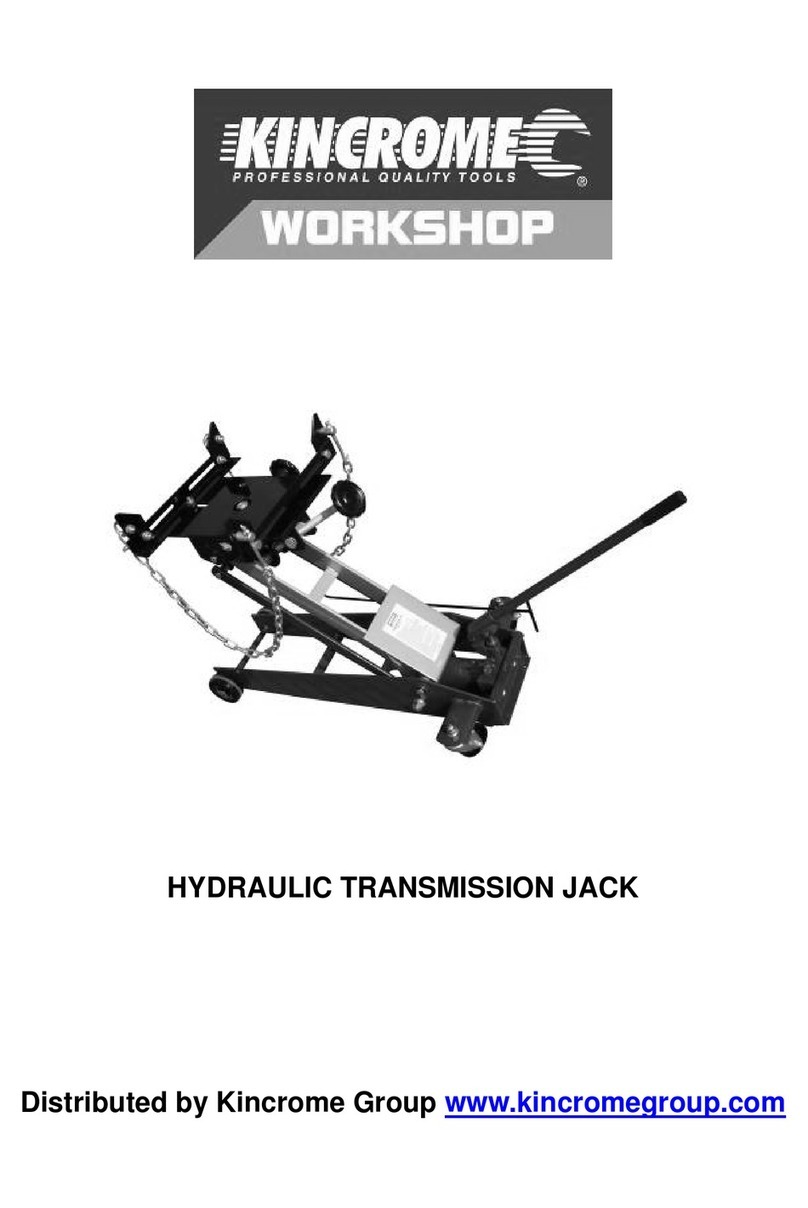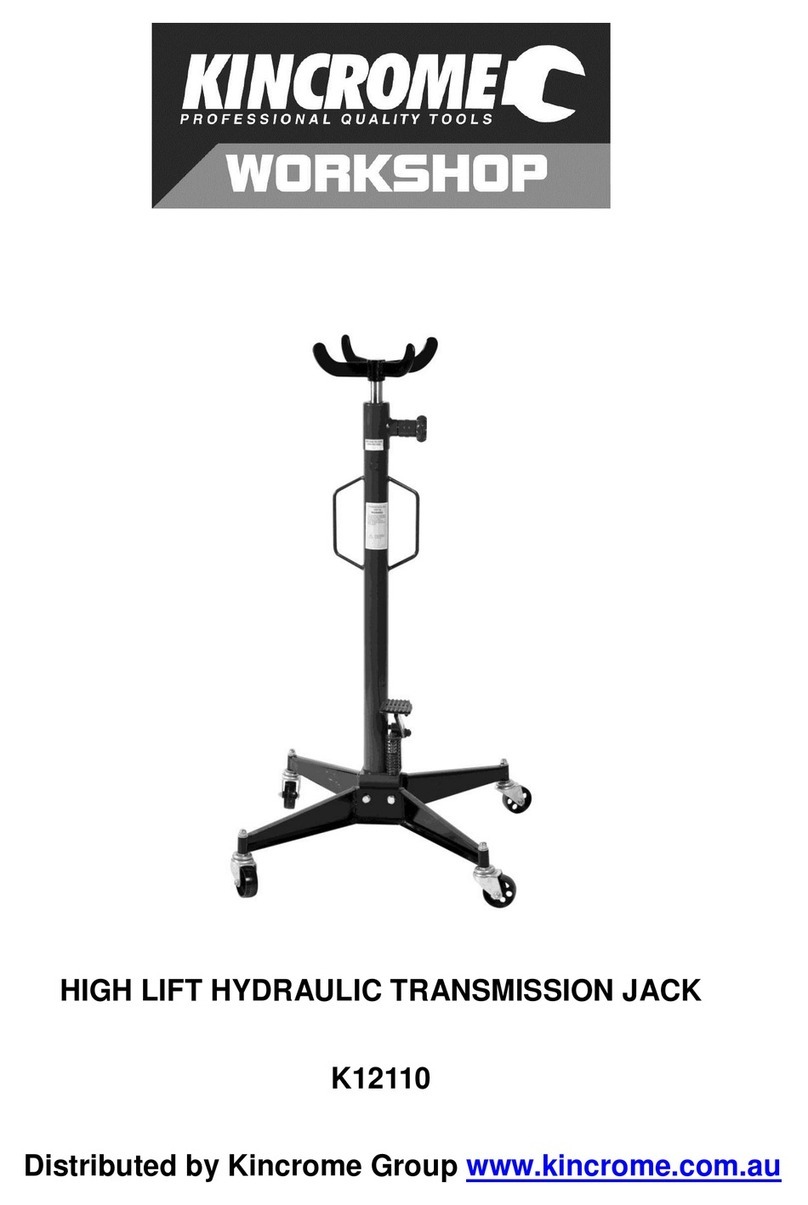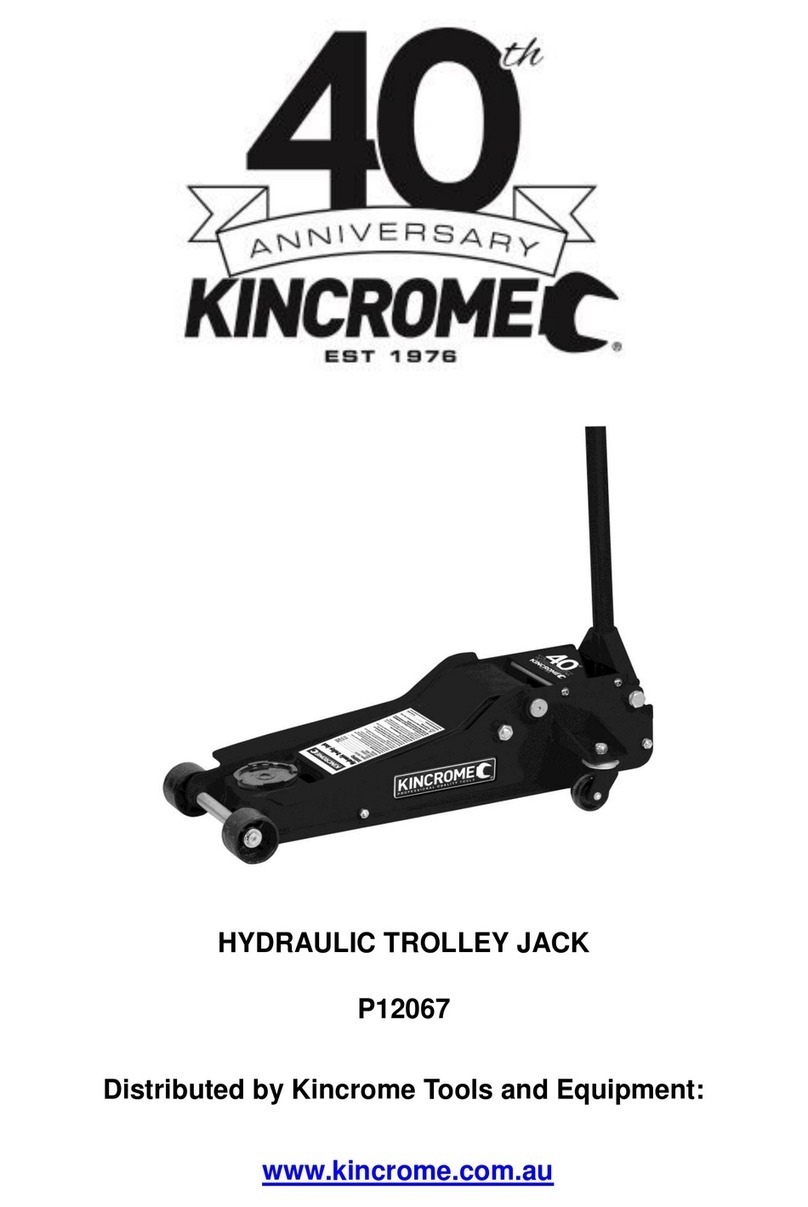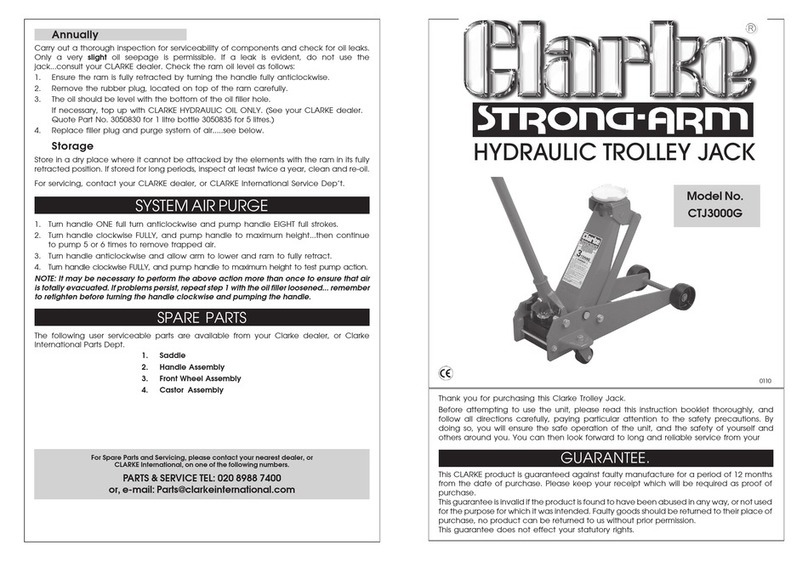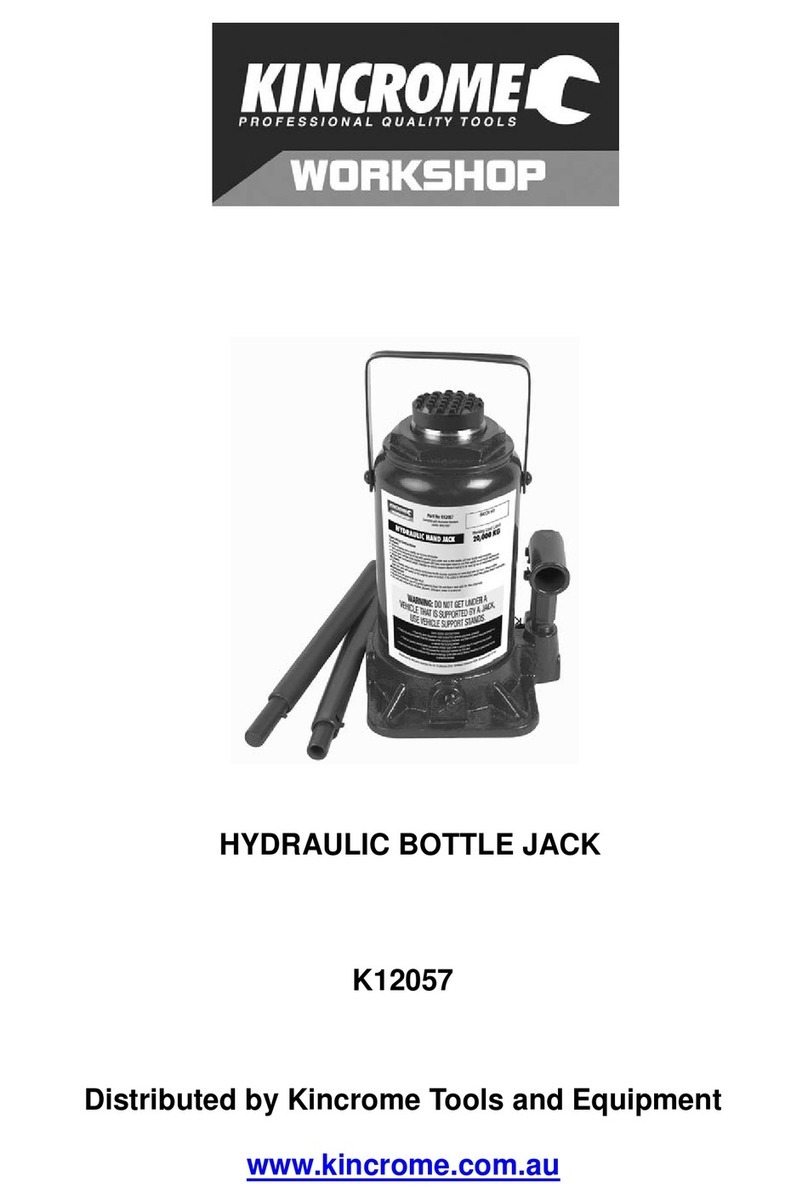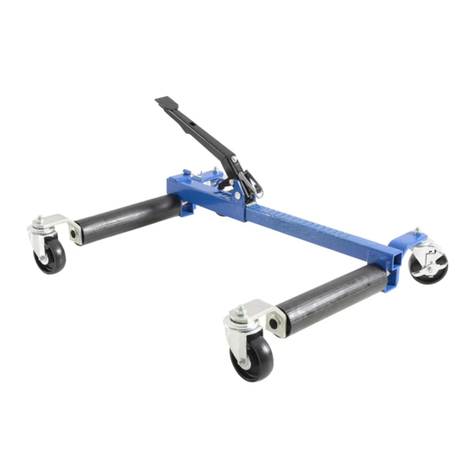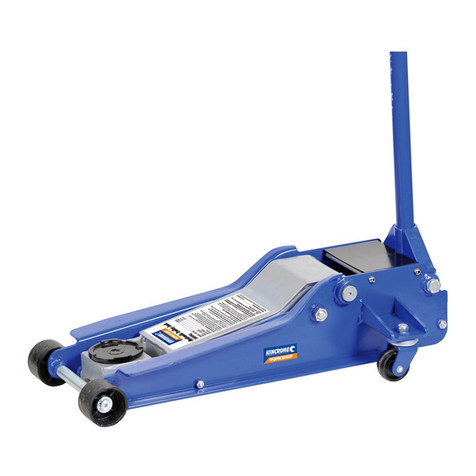Raising the Ram Plunger (using the Pump Lever 11)
WARNING!: Do not overload this jack. Maximum capacity, refer to the specification section for the max working limits
1. Assemble the handle (8), ensure that pins align with slots.
2. Place vehicle in the park, with hand brake on and wheel securely chocked to prevent inadvertent vehicle movement.
3. Locate and close release valve (4) by turning Handle (8) clockwise until firm resistance is felt to further thread engagement.
4. Verify lift point, centre jack saddle under lift point.
Caution: The Vehicle manufacturer’s owner’s manual should be consulted for the correct lift points prior to the lifting of the vehicle.
5. Insert the assembled handle (8) into the manual pump lever (11) and slowly pump the handle (8) until the saddle (1) contact
the vehicle’s lift point. To lift, continue pumping until load reaches desired height.
6. Immediately secure lifted load with appropriately rated jack stands.
Raising the Ram Plunger (using the Control Valve (6)
Caution: Do not use an extender on the air hose (2) or the operating handle.
1. Place vehicle in the park, with hand brake on and wheel securely chocked to prevent inadvertent vehicle movement.
2. Connect the air hose from the compressor to the air inlet (7) of the Air/Hydraulic Jack.
3. Locate and close release valve (4) by turning Handle (8) clockwise until firm resistance is felt to further thread engagement.
4. Verify lift point, centre jack saddle under lift point.
Caution: The Vehicle manufacturer’s owner’s manual should be consulted for the correct lift points prior to the lifting of the vehicle.
5. Depress the Lever (5) to operate the control valve (6) until the saddle (1) contact the vehicle’s lift point.
To lift, continue pressing the lever (5) until load reaches desired height.
6. Immediately secure lifted load with appropriately rated jack stands.
Lowering the Ram Plunger
Caution: Make certain that all personnel are clear of the load before lowering. Control the rate of descent of the load at all times.
The more you open the release valve (4) , the faster the load descends.
1. Raise load high enough to clear the jack stands, then carefully remove jack stands (always used in pairs).
2. Slowly turn the handle (8) counter-clockwise, but no more than 1 turn. If the load fails to lower:
a) Use another jack to raise the vehicle high enough to reinstall jack stands.
b) Remove the affected jack and then the stands.
c) Lower the load by turning the release valve counter-clockwise, but no more than 1 turn.
3. After removing jack from under the load, push ram and handle sleeve down to reduce exposure to rust and contamination.
CARE & MAINTENANCE
Caution: Prior to making any adjustments ensure the compressor is turned off and unplugged, and the air hose (2) are stationary.
Note: These procedures are in addition to the regular checks and maintenance explained as part of the regular operation of the
air-operated tool.
1. BEFORE EACH USE, inspect the general condition of the tool. Check for:
a) loose hardware or housing,
b) misalignment or binding of moving parts,
c) cracked or broken parts, and
d) any other condition that may affect its safe operation.
2. DAILY - Air Supply Maintenance:
Every day, maintain the air supply according to the component manufacturers’ instructions. Drain the moisture filter regularly.
Performing routine air supply maintenance will allow the tool to operate more safely and will also reduce wear on the tool.
3. QUATERLY (every 3 months) :
Tool Disassembly, Cleaning, and Inspection: Have the internal mechanism cleaned, inspected, and lubricated by a qualified
technician.
a) Periodically check the air and hydraulic fittings for leaks. Repair if any leak is detected.
b) Periodically lubricate all moving points of the Jack.
c) The Hydraulic Ram should be kept clean, free of dirt and water, and protected from corrosion.
